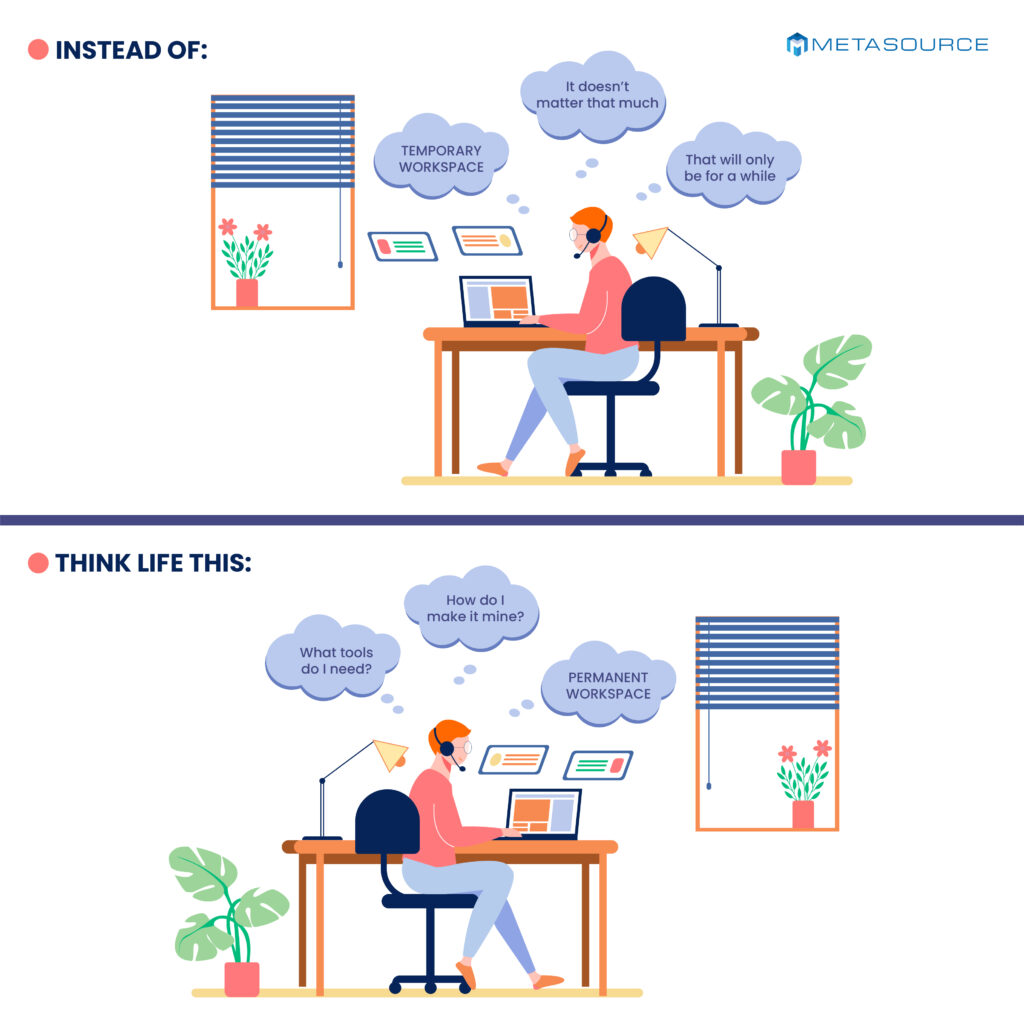Many of us have engaged in remote work in some form or another since the COVID-19 pandemic started, whether it’s working from home or at a nearby cafe. While responses to remote work have been mixed, it has the potential to be effective, provided managers and employers take the right steps. To help you reap the full benefits of remote work, Metasource has compiled a list of Remote Work Best Practices, for now and after the pandemic. Don’t have a remote team yet? Read our article on how to build an efficient remote team here.
Main Challenge of Remote Work: The Temporary Mindset
For most of us, the main challenge of remote work was its abruptness. Organizations had to transition online completely within a short period of time, and everyone was ill-prepared for the different challenges remote work posed. Of course, most of us have worked remotely for some period now, but many still hold on to the mentality that remote work is temporary, which affects how they view the challenges of remote work. Instead of thinking of your bedroom as a temporary workspace, viewing it as a permanent one can drastically change everything: your energy, your productivity, your mood, etc. Additionally, this simple mindset shift also makes you treat this space better, such as making your workspace more conducive to productivity. Below we provide some tangible action items to make remote work effective for you.

4 Remote Work Best Practices for Employers
1. Consistent Communication is Key Remote Work Best Practices
This is perhaps the most important best practice for remote work. We want to emphasize “consistent” because of the disconnected feeling remote work can sometimes give to employees. As employers, we want to make sure our employees still feel connected to the company during remote work; one easy way to do that is ensuring transparent, consistent communications. This does not mean constant — consistent means scheduled communications. Other best practices for effective communication includes:
- Set up periodic check-ins with employees. If work relationships permit, employers should use informal communication channels as well.
- Use shared online tools like Slack, ClickUp for team organization and quick communications
- Used shared calendars so everyone’s availability is readily available
- Send succinct, clear emails. Send them at the same time each day, if possible, and limit emails to a minimum.
2. Setting Clear Expectations
As there is less supervision with remote work, setting clear expectations with employees is crucial so deliverables and projects are completed on time, and work performance doesn’t suffer. Clearly communicate expectations by:
- Clarifying Expectations: Make expectations tangible whenever possible — “work hard” is much vaguer than “complete x items in x days”.
- Agree on Expectations: Open up the floor to employees so they can voice their concerns and questions. Oftentimes expectations set for remote work don’t account for the mental difficulties of remote work. If expectations are agreed on from both sides, more trust is built between employer and employees, and work performance is held to standard in tandem.
3. Reflect, Adjust, Improve, Repeat
Working remotely takes time to get good at. Follow these steps to ensure you continue to employ the best practices for remote work:
- Reflect: Discuss with managers and employees on what is going well, and what isn’t
- Adjust: Identify the weak points and determine methods to adjust to situation
- Improve: Implement methods to tackle weak points
- Repeat
Additionally, you can read our other article on Managing Remote Teams for High Performance here.
4. Designate a Workspace
Designating a workspace is a major part of readjusting your mental approach towards remote work. When you designate a specific workspace, working feels more purposeful, and you are much more likely to be productive. Truthfully, a lot of us are unable to find an ideal workspace in our homes, whether it be because of connectivity issues or external distractions (family, neighbors, etc.). A solution to this may be to work at a coworking space. There are plenty of coworking spaces in Ho Chi Minh city, such as the Hive, WeWork, and Saigon Coworking. One does not hav to designate a coworking space as a workspace — it is already a designated workspace. Hence, employers can rent out or encourage employees to seek coworking spaces to complete their work.
Metasource offers recruitment, hosting, and legal services to foreign companies looking to start or expand to Vietnam. You can contact us at info@demo.metasource.co to receive a free consultation, or fill out the contact form below.


